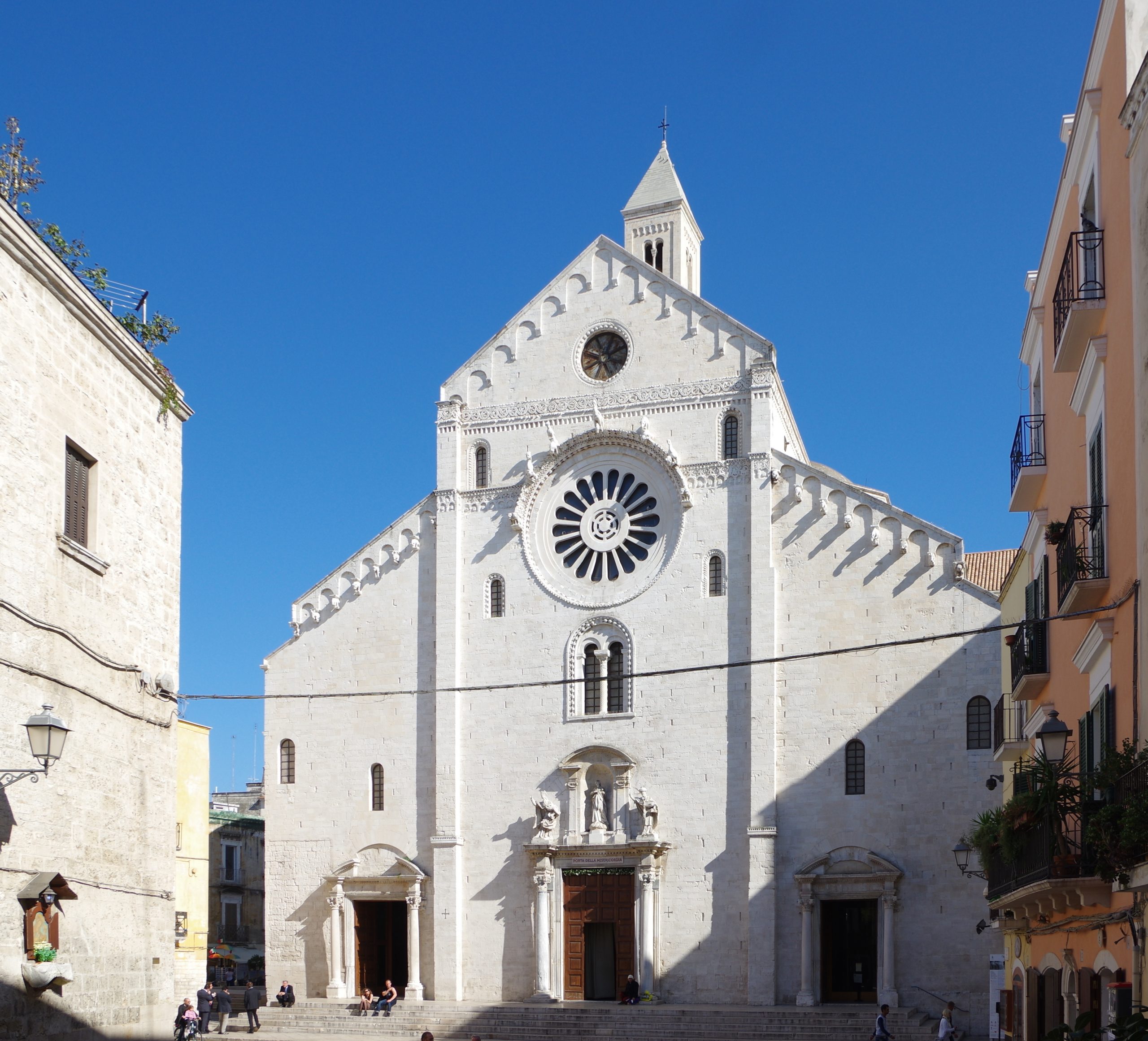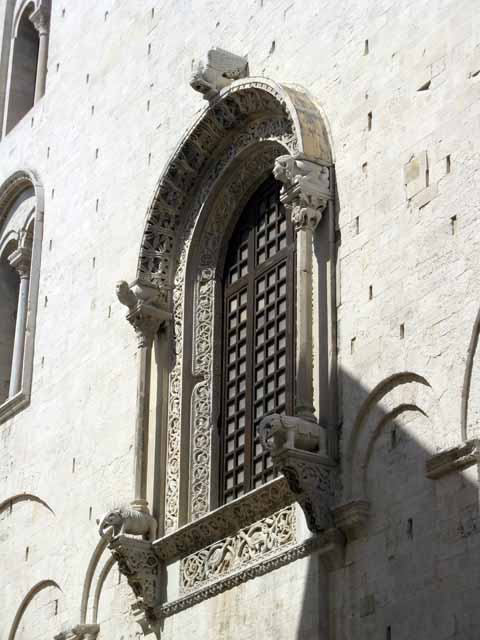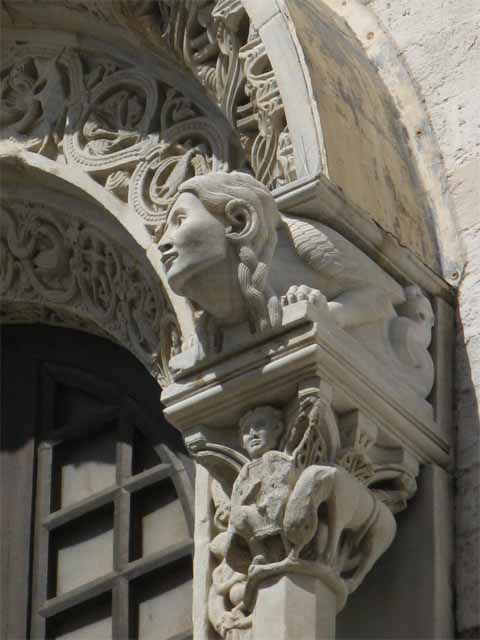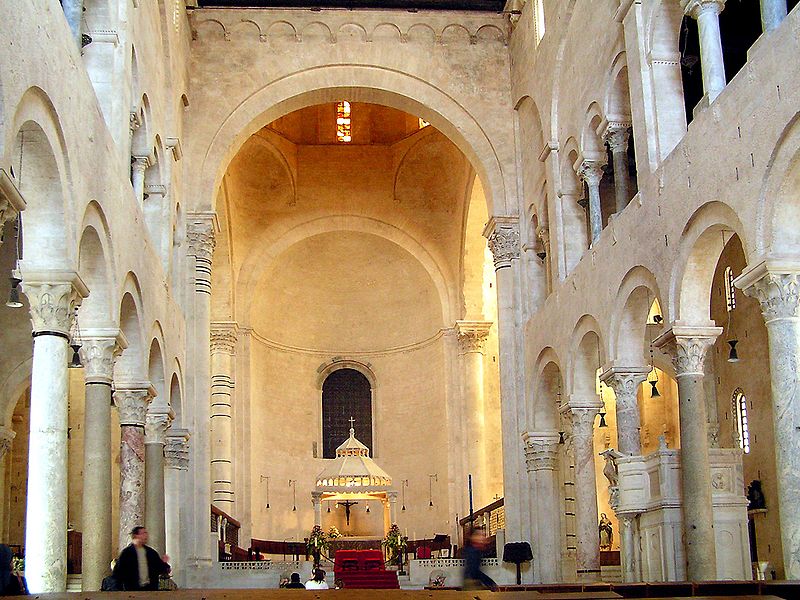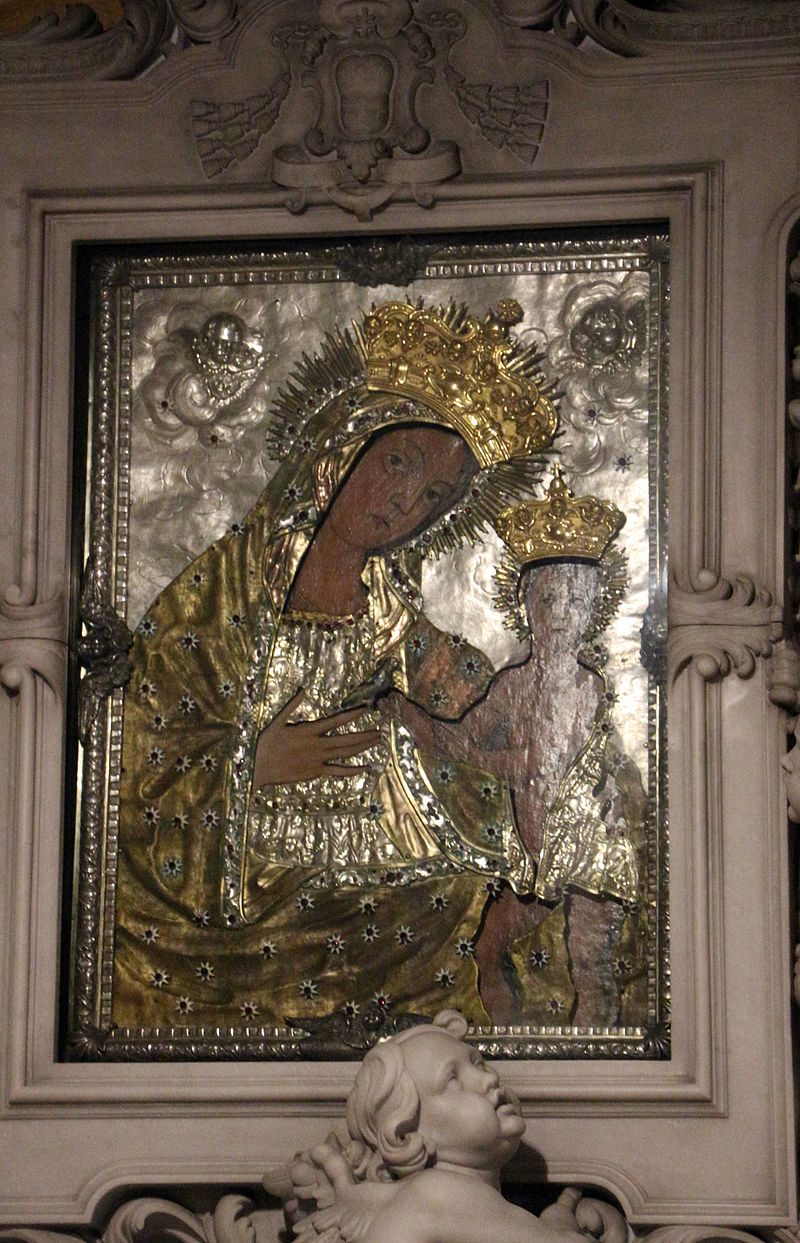
La Cattedrale di Bari

La Cattedrale di Bari di San Sabino (Di Berthold Werner, CC BY-SA 3.0, https://commons.wikimedia.org/w/index.php?curid=61448663)
La Cattedrale di Bari, intitolata a San Sabino e alla Vergine Odegitria, cioè colei che indica il cammino, sembra emergere a fatica tra i rumorosi vicoli della città vecchia, quasi nascosta nel suo ventre e dalla fama della più nota e venerata chiesa di S. Nicola. A imporre la sua presenza ci pensa la torre campanaria, l’unica che svetta così alta tra i tetti bassi del borgo e che, da secoli, rimane inconfondibile punto di riferimento nello skyline urbano.
Sulla bianca facciata tripartita e all’ interno è possibile leggere la sua lunga storia, che ha inizio in tempi remoti nel succorpo, impreziosito da bellissimi mosaici paleocristiani, e che si snoda per secoli, sino alle aggiunte di epoca barocca, evidenti nella cripta e nelle statue dall’accentuata teatralità, che arricchiscono il portale principale.
L’edifico ha assunto l’aspetto attuale tra il 1170 e il 1178, quando fu completamente ricostruito, dopo essere stato raso al suolo per volere di Guglielmo il Malo, in seguito alla rivolta dei baresi ai nuovi signori normanni.
La facciata è suddivisa da lesene in tre parti che riproducono all’esterno la suddivisione delle navate interne. Le sommità degli spioventi presentano un coronamento ad archetti pensili poggianti su mensole scolpite con serpenti e animali, attinti direttamente dal ricco e fantasioso bestiario medievale.
Un grande rosone, decorato da statue di mostri, draghi, serpenti e figure grottesche, si apre sul registro superiore in corrispondenza con il portale principale. La zona absidale è interamente nascosta all’esterno da un muro di controfacciata che conserva un meraviglioso finestrone, considerato uno dei capolavori della scultura romanica dell’XII secolo. Questa ampia apertura centinata, incorniciata da un baldacchino poggiante su colonne pensili, è esuberantemente scolpita con motivi vegetali e animali di origine orientale, tra cui spicca una misteriosa arpia.

Bari, Cattedrale, controfacciata, finestrone absidale.
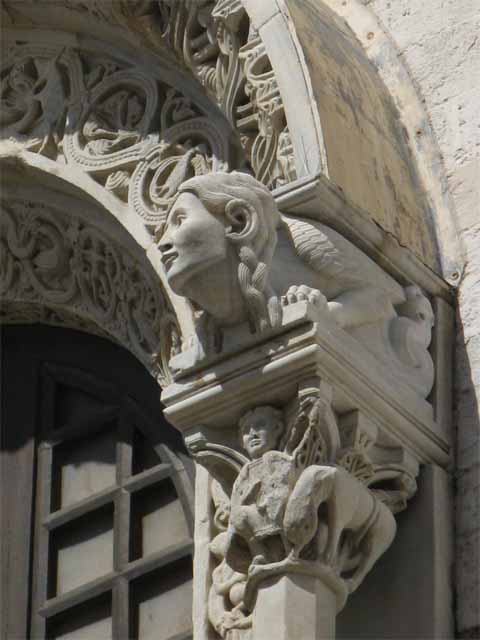
Bari, Cattedrale, controfacciata, particolare del finestrone absidale
La fantasiosa decorazione plastica romanica dell’esterno contrasta con l’atmosfera austera e mistica dell’interno, dove il silenzio delle profonde navate è ritmato solo dal solenne gioco dei colonnati, a cui fanno da contrappunto le eleganti trifore dei matronei superiori.
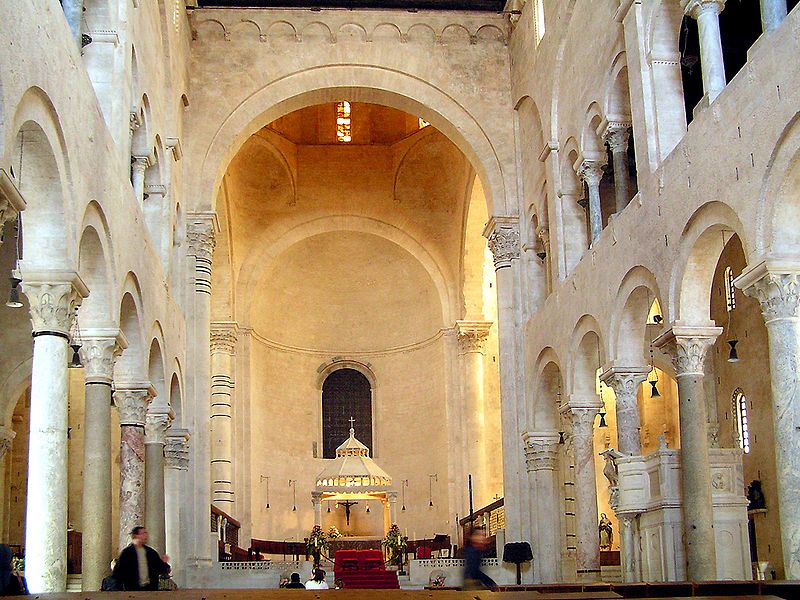
Bari, cattedrale di San Sabino, interno. (Foto di Porcullus Marek Postawka – Opera propria, CC BY 3.0, https://commons.wikimedia.org/w/index.php?curid=3526917)
Cinque metri sotto il livello della Cattedrale si conserva il nucleo più antico della chiesa che risale al VI secolo. Si tratta di una basilica paleocristiana che ha conservato quasi intatto il suo fascino antico. L’ambiente, originariamente diviso in tre navate, oggi conserva le basi su cui poggiavano le colonne originarie e un mosaico pavimentale decorato con motivi geometrici ed elementi vegetali e zoomorfi. È ancora leggibile un’iscrizione che ricorda di come un tale Timoteo, per adempiere a un voto, provvide a proprie spese alla decorazione musiva del pavimento.
Oggetto di particolare devozione è l’icona della Madonna Odegitria, conosciuta anche come Madonna di Costantinopoli, conservata nella cripta. La tradizione narra che la tavola sia giunta a Bari da Costantinopoli, nell’VIII secolo, quando durante il periodo iconoclasta, l’imperatore d’Oriente aveva ordinato la distruzione di tutte le immagini sacre. In realtà si tratta di una tavola del XVI secolo che riproduce il tipo iconografico, caro alla tradizione bizantina, della Vergine in trono che indica con la mano il figlio e, così facendo, mostra la via per il cielo che è Cristo.
Nel corso del XVIII secolo la tavola fu modificata e, secondo il gusto e la sensibilità estetica dell’epoca, fu protetta e incastonata in una fastosa riza argentea.
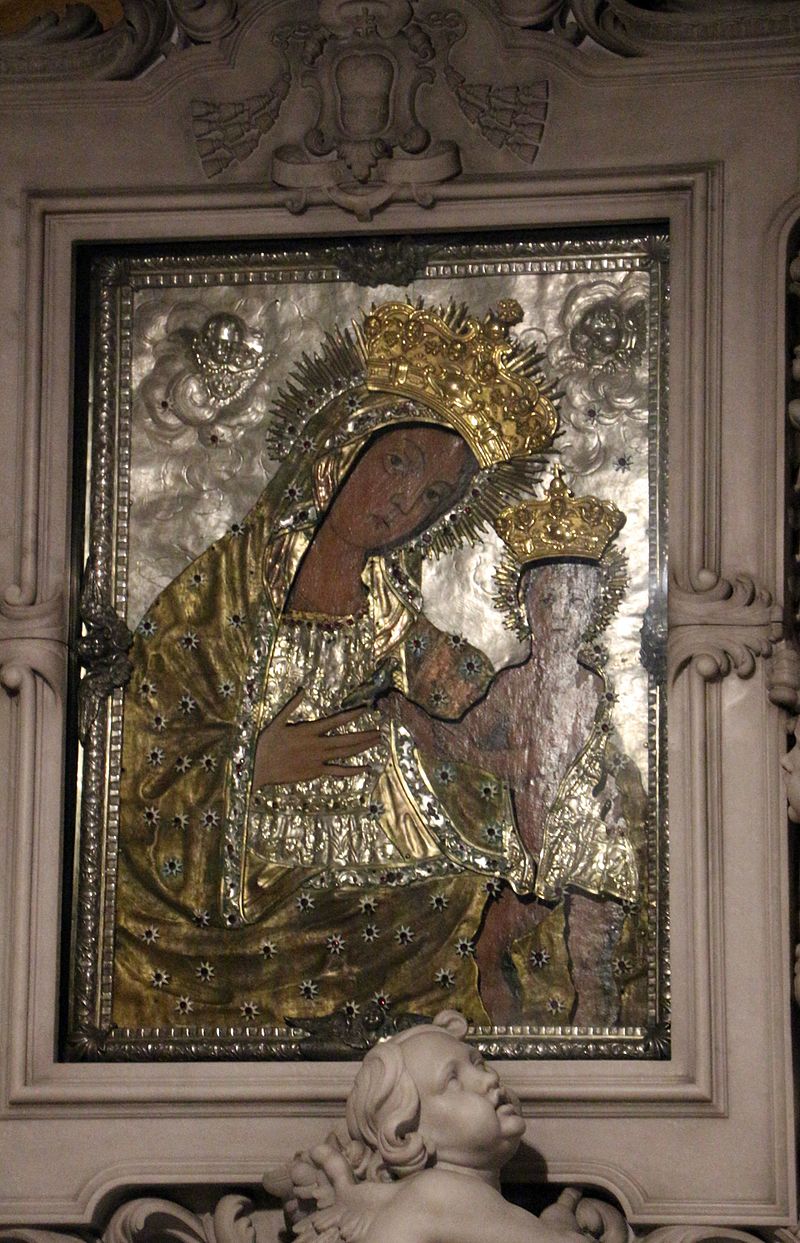
Icona della Vergine Odegitria
(Foto di Sailko – Opera propria, CC BY 3.0, https://commons.wikimedia.org/w/index.php?curid=58901057)
